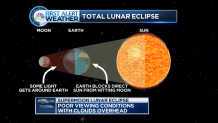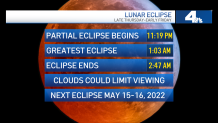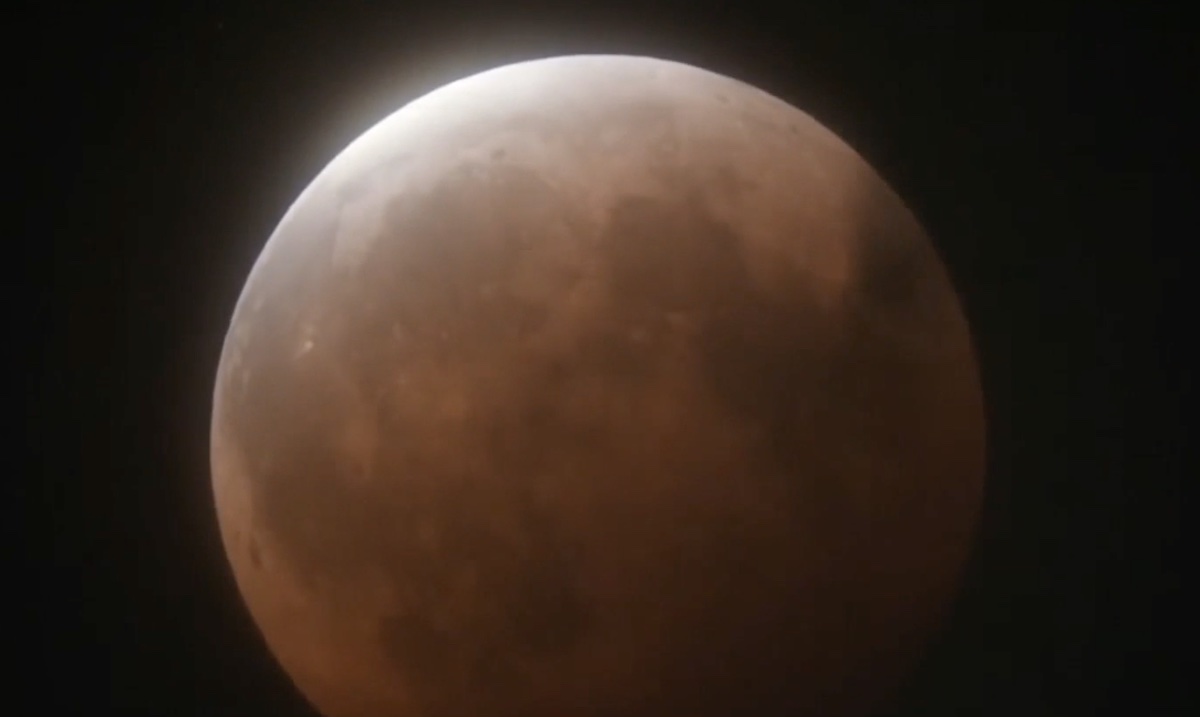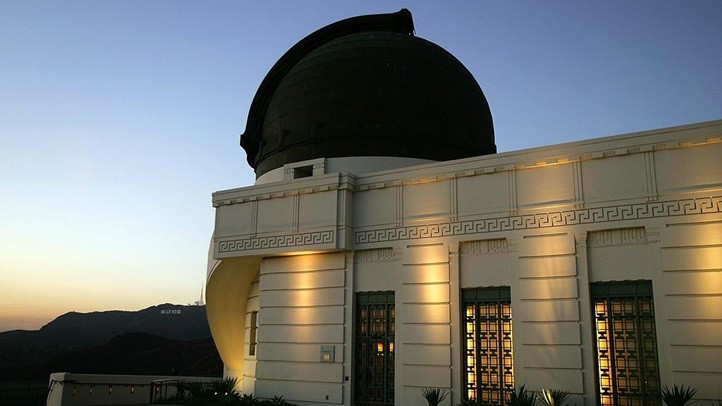What to Know
- The partial eclipse of the moon will be visible around 11:19 p.m., with the peak eclipse occurring around 1:03 a.m. on Nov. 19.
- By 2:47 a.m. on Friday, the eclipse will be over.
- About 97% of the moon will be within the Earth's shadow during the peak of the eclipse.
Starry-eyed lovers of astronomy have something to look forward to on Thursday when a near-total lunar eclipse will be visible from SoCal.
Photos: Longest Lunar Eclipse in Centuries Bathes 99% of Moon in Red
Video: See the lunar eclipse over SoCal and other locations.
Get top local stories in Southern California delivered to you every morning. Sign up for NBC LA's News Headlines newsletter.
But according to NBC4 meteorologist Belen De Leon, the cloud cover may mean good views of the lunar event are limited.
"The marine layer is returning this week to help lower our temperatures and that may reduce viewing opportunities west of the mountains," De Leon said.
Click here to send us your eclipse photos and video.
Even so, the astronomical event is one to note -- 97% of the moon will be within the Earth's shadow during the peak of the eclipse, according to the Griffith Observatory.
While that means this is still only a partial eclipse, it's enough to give November's Beaver Moon a red hue, and it's the first lunar eclipse visible in our area since May, when we saw the total Super Blood Moon Eclipse.
What causes a lunar eclipse?
It's all because of the orbits of the moon around the Earth and the Earth around the sun, according to NASA.
Sometimes, as all three celestial objects move around the solar system, the Earth passes between the moon and the sun. When this happens, the Earth casts a shadow, just like any other object that moves in front of a light source.
That shadow has two parts. The darkest, inner part of the shadow where the sun is directly behind the Earth, is called the umbra. The more hazy and lighter part of the shadow around the edges is called the penumbra.
Lunar eclipses happen when that dark umbra falls on the surface of the moon, when the moon moves in its orbit through the space where Earth blocks light from the sun.

If everything lines up just right, the moon and the sun are on exactly opposite sides of our planet, and we get a total lunar eclipse where the moon is entirely covered by the umbra.
According to NASA, even during these total eclipses, sunlight filters through Earth's atmosphere, illuminating the moon in a way that makes it appear red from the ground on Earth.
But, more often, we get a partial lunar eclipse, meaning only some of the moon is covered by the umbra. During these events, the moon appears very dark where it is covered by Earth's shadow, and what you see depends on where you are on the Earth's surface relative to the moon and sun.
On Thursday, according to the Griffith Observatory, the moon's surface will be 97% covered by Earth's shadow -- almost a total eclipse, but not quite -- and the moon will appear to glow a copper or red color.
How can I see the lunar eclipse?
Experts say you don't need any special equipment to view lunar eclipses. It's safe to look directly at one, unlike solar eclipses. Unless you'd like to get a closer look, you don't need a telescope any more than you would need one to look at the moon any other night.
The first visible "bite" out of the moon will be visible around 11:19 p.m., with the peak eclipse occurring around 1:03 a.m. on Nov. 19. By 2:47 a.m. on Friday, the eclipse will be over.
"The eclipse will last about six hours, making it the longest partial eclipse since Feb. 18, 1440," De Leon said.

"If skies are clear, the eclipse will be visible to the unaided eye from anywhere in Southern California," the Griffith Observatory says on its website. "Just go outside and look up to the southwest."
As for the marine layer and resulting clouds, "It could be better to watch this in that higher elevation, and also in the deserts where the skies could be clearer," De Leon said Wednesday morning.
The observatory will also stream the eclipse online from 10 p.m. Nov. 18 until 4 a.m. Nov. 19.




